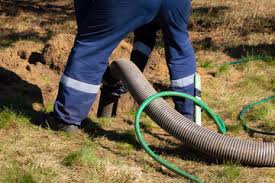
5 Helpful Tips for Homeowners new to their septic tank
So you bought a home with a septic tank and now you’re not sure what you got yourself into. You’re not alone – many homeowners often have questions about this; and they often don’t come up until after closing.
Making the transition from City Sewer to a septic tank is often a smooth process. Your contract* likely required your Seller to provide you with a Septic report at least 90 days prior to closing. While sometimes these reports can call for a retest, or require some minor fixes, generally all they tell you is that your septic system is operating as it should – hey, as long as what goes down doesn’t come back up, who are we to complain?
So how do you ensure that your septic system stays working properly? Here are 5 helpful tips for homeowners that are new to their septic system!
- Careful What You Flush. Your septic system is not a garbage disposal. Flushing certain items down the toilet or the drain can clog your system. Things like paint, chemicals, kitty litter, coffee grounds, feminine products, “disposable” wipes, paper towels, etc. should not be flushed down your system.
- Treat Your System. About once a month you should treat your septic system; this is as simple as flushing your toilet. Brands such as Rid-X, Green Gobbler, Mighty Force, and more sell septic treatment pouches – all you do is drop them in the toilet and flush. These pouches help balance the bacteria in your tank so it can properly break down the solids in your tank. Think of them as probiotics for your septic tank. Have Amazon Prime? Set up a recurring purchase and you’ll be all set!
- Have it Pumped. You tank does hold a finite amount of waste. You should have your tank periodically pumped/emptied to make sure the system is running efficiently and in good working order. A good rule of thumb is every 2-5 years, but how often your tank should be emptied varies from case to case.
- Yes, It Will Still Look ‘Full’ After It’s Pumped. Oftentimes homeowners expect to look down their septic tank and see it completely empty after it’s been pumped. This is not the case! Pumping the tank removes solid waste/sludge from the tank. However, there is a Standard Operating Level for your tank; it should be “filled” about a foot or so from the top of the septic tank, depending on the size of your tank. Solids will go to the bottom of the tank while the water will drain off at the top.
- No, your yard shouldn’t be soupy. A soupy, swampy yard may be common after a big rain, but it is also a sign your septic system is failing. In addition to a swampy yard, you may also notice the smell of sewage, slow draining in your house, trouble flushing, gurgling pipes, and even an overly healthy (read: too fertilized) lawn. These are all signs your septic may need some attention. It could be a failed pump, disconnected pipes, or that you’re due for a pumping. Whatever the case may be, it’s important to contact a professional right away to have your tank inspected. The sooner you address an issue, the better!
For more information about Attorney Grace L. Jinkins please visit her profile. For more information about residential real estate please click here.
Dated: September 11, 2020
*Paragraph 33 of the Multi Board Residential Real Estate Contract 7.0
Sources:






